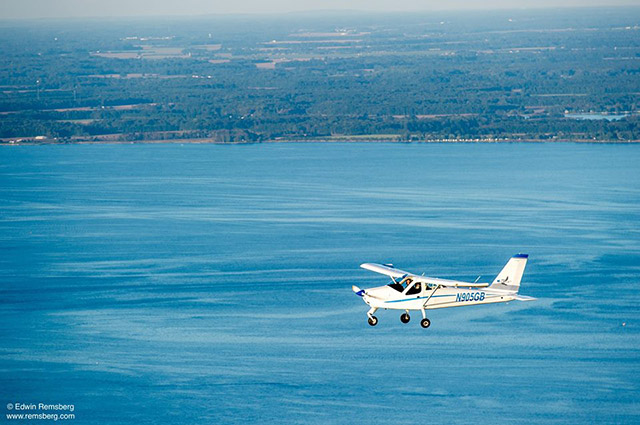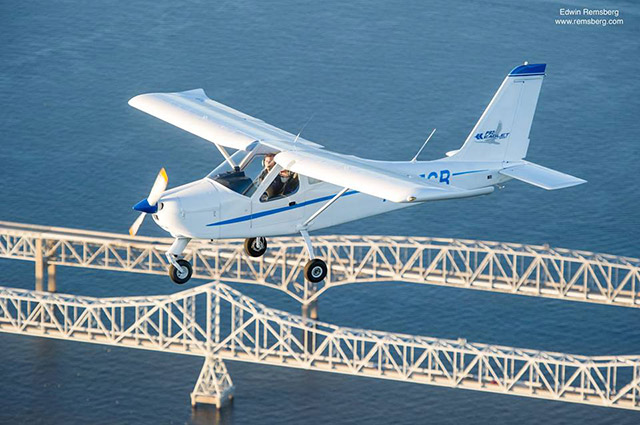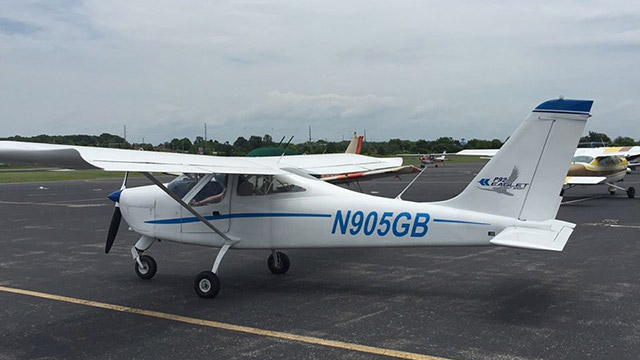The Aircraft Spotlight feature looks at an airplane type and evaluates it across six areas of particular interest to flying clubs and their members: Operating Cost, Maintenance, Insurability, Training, Cross-Country, and Fun Factor.

Having an LSA in a flying club opens the door for members who no longer have a medical, as well as sport pilots looking for an affordable entry into aviation. The Tecnam P92 Eaglet is an LSA that is inexpensive to operate and a favorite of sport pilot flight instructors for its performance. It’s also a nice cross-country aircraft for two people.
“The Tecnam is a nice, good, honest aircraft,” Chesapeake Sport Pilot Flying Club President Dan Brown said. “It has good performance, it’s easy to fly—no really bad characteristics at all—and inexpensive to operate. In that sense it’s an excellent club aircraft.”
RATINGS:
Operating Cost 4
Maintenance 3
Insurability 4
Training 4
Cross Country 3.5
Fun Factor 3.5
Overall 3.7
Operating Cost (4 stars)
The Tecnam has a purchase price ranging from $75,000 to $90,000, which is more than early Cessna 172s or Piper Cherokees. However, it’s Rotax 912 burns about between 4 and 4.5 gph, and it can take auto gas, making the fuel costs even lower. Chesapeake Sport Pilot Flying Club (CSP) rents it’s Tecnam for $55 an hour, Hobbs time wet.
Maintenance (3 stars)
A typical annual for the Tecnam runs between $700 and $1,000 each year, Dan said. However, “It’s called a condition inspection in the Light Sport area.” The Rotax has a 2,000-hour TBO, but it’s geared so it has an extra gear box, meaning another maintenance item. Also, Rotax engines are supposed to be worked on only by a mechanic that has completed a Rotax training course, so finding a mechanic might be a bit challenging, although CSP didn’t have any problems.
Getting parts for the Italian-built aircraft can be a challenge at times. However, CSP flight school owner Helen Woods said Tecnam recently replaced its parts manager, so things might improve. “All the foreign built planes can be a pain to get parts for,” she said. Which means the plane may be grounded for awhile waiting for parts.
She also noted, her flight school has found LSAs in general have much higher maintenance requirements than do Part 23 airplanes. “The planes are built to be very light and stuff has to be replaced a lot on a light sport airplane.”
Insurability (4 stars)
CSP didn’t have any trouble getting insurance for the aircraft. The flight school has a few Tecnams, and its insurance broker was familiar with the aircraft, which was likely a benefit to the club. The cost to insure the aircraft is about $2,600 each year.
Training (4 stars)
Although the flying club does not do primary instruction, Chesapeake Sport Pilot Flight School has a fleet of aircraft including Sky Arrows, RV-12s, Tecnams, and a Searey. Helen said of all the aircraft types in her fleet, “the Tecnam Eaglets are probably the flight instructors pick.”
“The Tecnam Eaglets are absolutely unbelievable. They do everything a flight instructor wants an airplane to do,” Helen said. “The rudder and aileron coordination is absolutely dead on. And the plane does not stall, which is fantastic for students who need to spend some hours on their approaches and landings.”
Because it is an LSA, it can’t be flown in windy conditions, with a demonstrated crosswind component of 15 knots.
Dan also noted that people can go for a private rating or do a lot of work toward an instrument rating in the Tecnam. “You can’t fly in actual instrument conditions but you can certainly do a lot of simulated instrument work in it.”

Cross Country Travel (3.5 stars)
Most people don’t think of an LSA as a cross-country machine, but the Tecnam provides a comfortable airplane for two people. It cruises at 105 knots at 65 percent power, or about 110 knots at 75 percent power Dan said. It has a fuel capacity of 23 gallons, and burns about 4 to 4.5 gph, so it has good range. “With about two-thirds fuel, which is about 15 gallons, it’ll take a couple of 200 pound adults and baggage,” Dan said.
“It’s a nice cross-country aircraft. The performance is about equal to a 172, without being able to carry four people,” Dan said. “Other that that, with two people aboard, it’s certainly about equal to the performance of that class of aircraft, 172 or a Cherokee. In a lot of ways, it’s more fun to fly. It’s a good comfortable aircraft for cross-country.”
The Tecnam also is really good for older pilots or others with bad knees. You don’t have to climb up into them, you can kind of just sit down like you’re getting in a car, Helen said.
Fun Factor (4 stars)
The Tecnam may not be the sexiest plane on the line, but pilots enjoy flying them. “The controls are quite reactive and seem well balanced,” Dan said. He also noted that it has a stick rather than a yoke and some pilots find that configuration more fun. “I initially got my training in Aeroncas, but most of my flying has been in aircraft with a yoke, but I like the stick,” Dan said. “I like the responsiveness and control feel of the stick.”

Overall (3.7 stars)
Whether your club is looking to do primary training, or just have a fun little airplane that is inexpensive to operate, the Tecnam is a good choice. As an LSA it expands your membership possibilities to sport pilots and private pilots who no longer have a current medical. However, parts can be more difficult to come by since it is manufactured in Italy. Overall, “it’s a good honest aircraft that’s fun to fly,” Dan said. “It’s difficult to get it into serious trouble, it doesn’t stall or spin very easily. It’s an inexpensive aircraft to own and fly.”